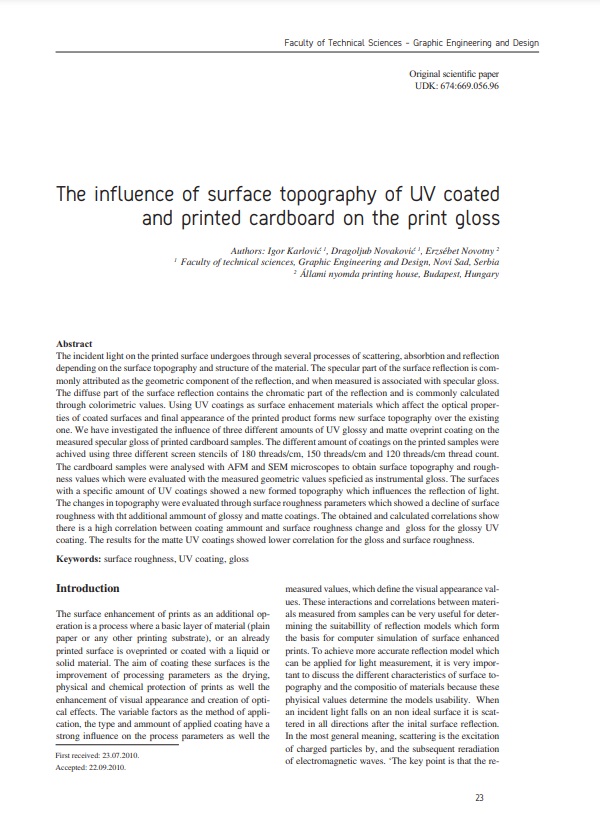The influence of surface topography of UV coated and printed cardboard on the print gloss

Published 2023-10-01
abstract views: 314 // Full text article (PDF): 179
Keywords
- surface roughness,
- UV coating,
- gloss
How to Cite
Copyright (c) 2010 © 2010 Authors. Published by the University of Novi Sad, Faculty of Technical Sciences, Department of Graphic Engineering and Design. This article is an open access article distributed under the terms and conditions of the Creative Commons Attribution license 3.0 Serbia.

This work is licensed under a Creative Commons Attribution 3.0 Unported License.
Abstract
-
The incident light on the printed surface undergoes through several processes of scattering, absorbtion and reflection depending on the surface topography and structure of the material. The specular part of the surface reflection is commonly attributed as the geometric component of the reflection, and when measured is associated with specular gloss. The diffuse part of the surface reflection contains the chromatic part of the reflection and is commonly calculated through colorimetric values. Using UV coatings as surface enhacement materials which affect the optical properties of coated surfaces and final appearance of the printed product forms new surface topography over the existing one. We have investigated the influence of three different amounts of UV glossy and matte oveprint coating on the measured specular gloss of printed cardboard samples. The different amount of coatings on the printed samples were achived using three different screen stencils of 180 threads/cm, 150 threads/cm and 120 threads/cm thread count. The cardboard samples were analysed with AFM and SEM microscopes to obtain surface topography and roughness values which were evaluated with the measured geometric values speficied as instrumental gloss. The surfaces with a specific amount of UV coatings showed a new formed topography which influences the reflection of light. The changes in topography were evaluated through surface roughness parameters which showed a decline of surface roughness with tht additional ammount of glossy and matte coatings. The obtained and calculated correlations show there is a high correlation between coating ammount and surface roughness change and gloss for the glossy UV coating. The results for the matte UV coatings showed lower correlation for the gloss and surface roughness.

